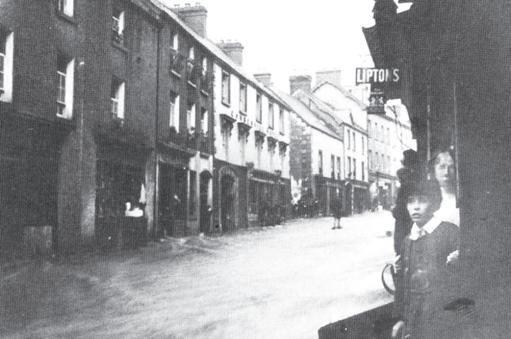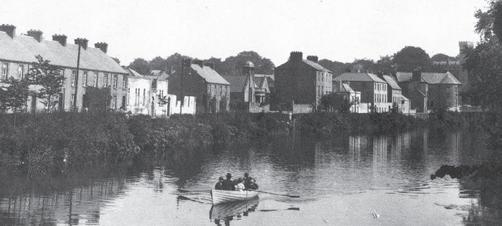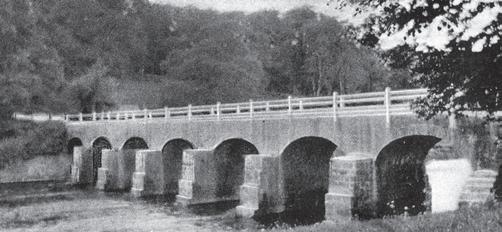
2 minute read
e Great Kilkenny Floods
BY JOHN FITZGERALD
Another calamitous ood struck Kilkenny on Friday January 29th 1926. It was the biggest and worst in living memory of the time. e river Nore rose about eight feet above its normal level, wreaking havoc on the people of John’s Quay, Lower John’s Street, and Greensbridge.
Advertisement
e water completely covered a vast area stretching from John’s Bridge to the civic barracks. A Kilkenny People report on the ood speculated that if the torrential rain had continued for a few more hours, a large number of small houses in out-lying areas of the city would have been submerged.
e raging oodwaters demolished a thirty-yard long concrete wall that had been built eighteen months before at the north side of the Kilkenny Collage lawn.
e Carnagie Library at John’s Quay was ooded, causing serious damage to books, les, and precious records.
Milk, bread, potatoes, and other supplies had to be delivered to the residents of homes in John’s Street and John’s Quay on pitchforks wielded by men in boats. A Constable Shannon and another person were caught in the powerful current in the Bregagh River, and swept down along the bullring at Watergate. ey were rescued when a Mr. MJ Brennan sent a horse and cart to their aid, dragging them from the watery depths.

Kilkenny Woolen Mills were inundated by the oodwaters, and lorry drivers had their engines disabled. Mr. N. Walsh of Greenbridge Mills saw his life ashing before him when the ood swept away scores of his hens, chickens, and a pair of prize roosters.

He had to look on helplessly as the traumatized clucking creatures disappeared beneath the waves or were propelled towards inevitable doom. Contemplating his “poultry in motion”, he raising his eyes to Heaven and shouted; “God, what I have done to deserve this?” e 1947 deluge e great ood of 1947 also made a lasting impression on anyone who experienced it. On the evening of Sunday, March 16th, the waters rose at a frightening pace... like a bolt from the blue that no one expected.
Heavy snowfalls in the preceding weeks had prepared the way for the deluge. Mountains of snow had accumulated across the length and breadth of the Irish countryside.
It had showed no signs of melting. So when the skies opened to unleash torrential rain on the thick white carpet that covered the cities, towns, villages, elds, roads, and lane ways, the downpour caused the snow to thaw too rapidly, swelling the volume of water to unprecedented levels nationwide.
In Kilkenny, John’s Quay, John Street, Dean Street, Blackmill Street, Abbey Street, Friar’s Bridge, Kieran Street, Vicar Street, and Irishtown, were severely a ected. e worst ow of water was at Blackmill Street and the Black Abbey. e oodwaters incredibly reached up to 15 feet in parts of the city. In the worst hit areas, householders paddled about in two feet of water in upstairs bedrooms. e town was quickly submerged under water to a depth of almost ten feet.
In omastown, the River Nore on the same day swelled into a raging torrent following twelve hours of persistent rain.

Part two e 1926 Flood

e benign “brook” that owed beneath the main street in omastown and conveyed water to the river burst through manholes in Market Street and ooded nearby homes. Within hours, the town was a disaster zone, with the ood wreaking the worst havoc in the memory of the oldest man in the locality. Residential buildings and businesses were decimated by the freak of nature.
(To be continued...)










